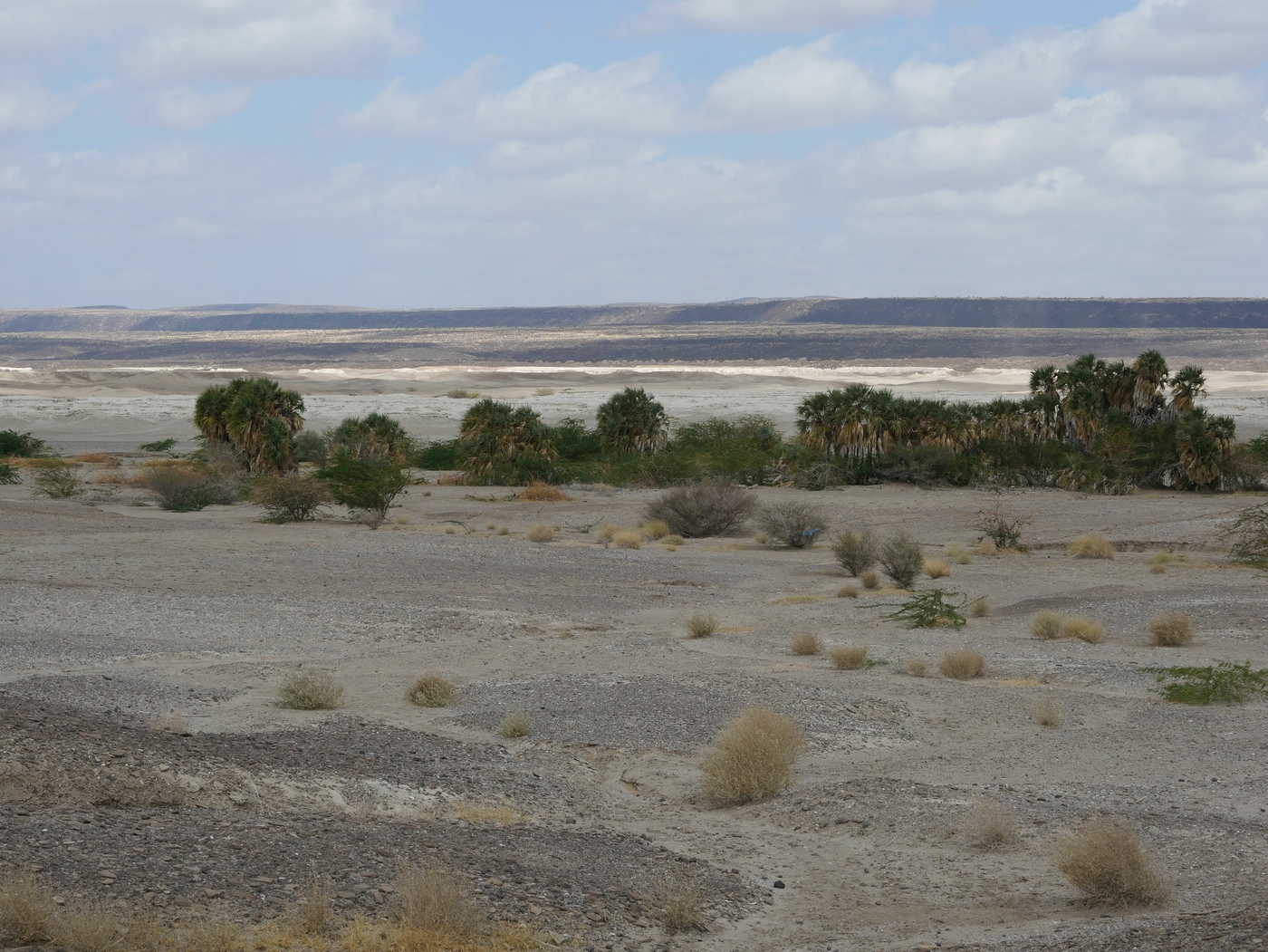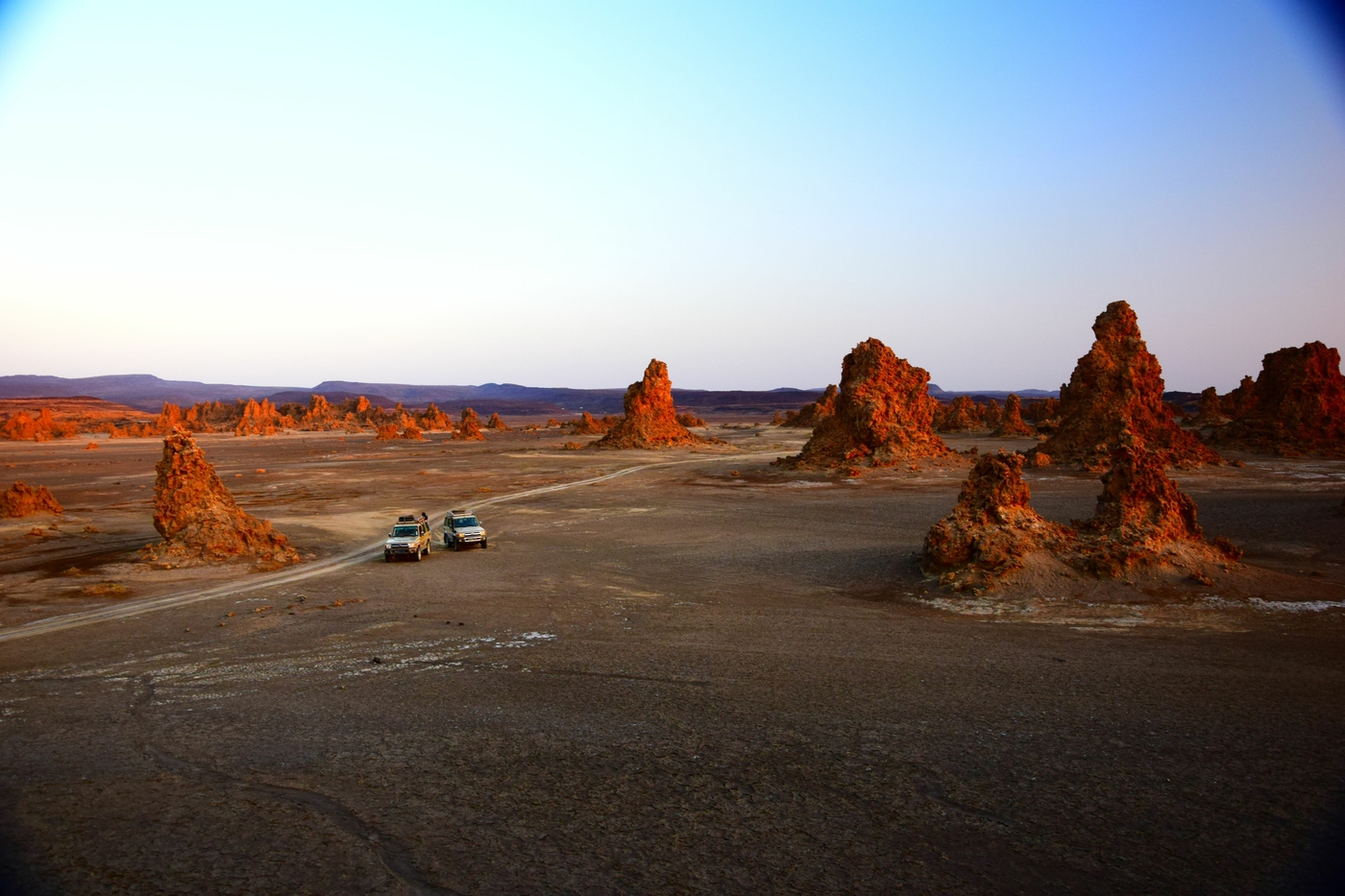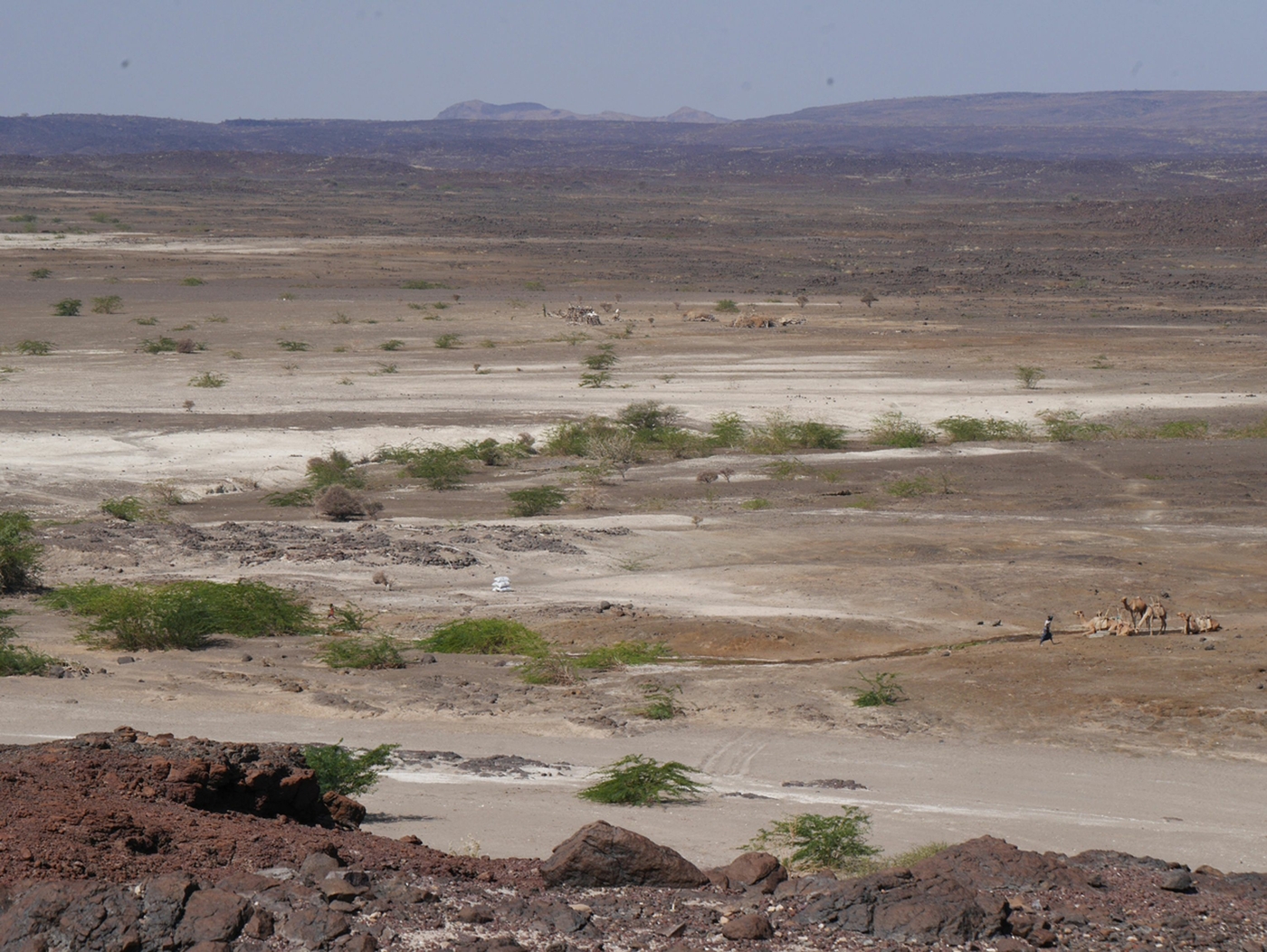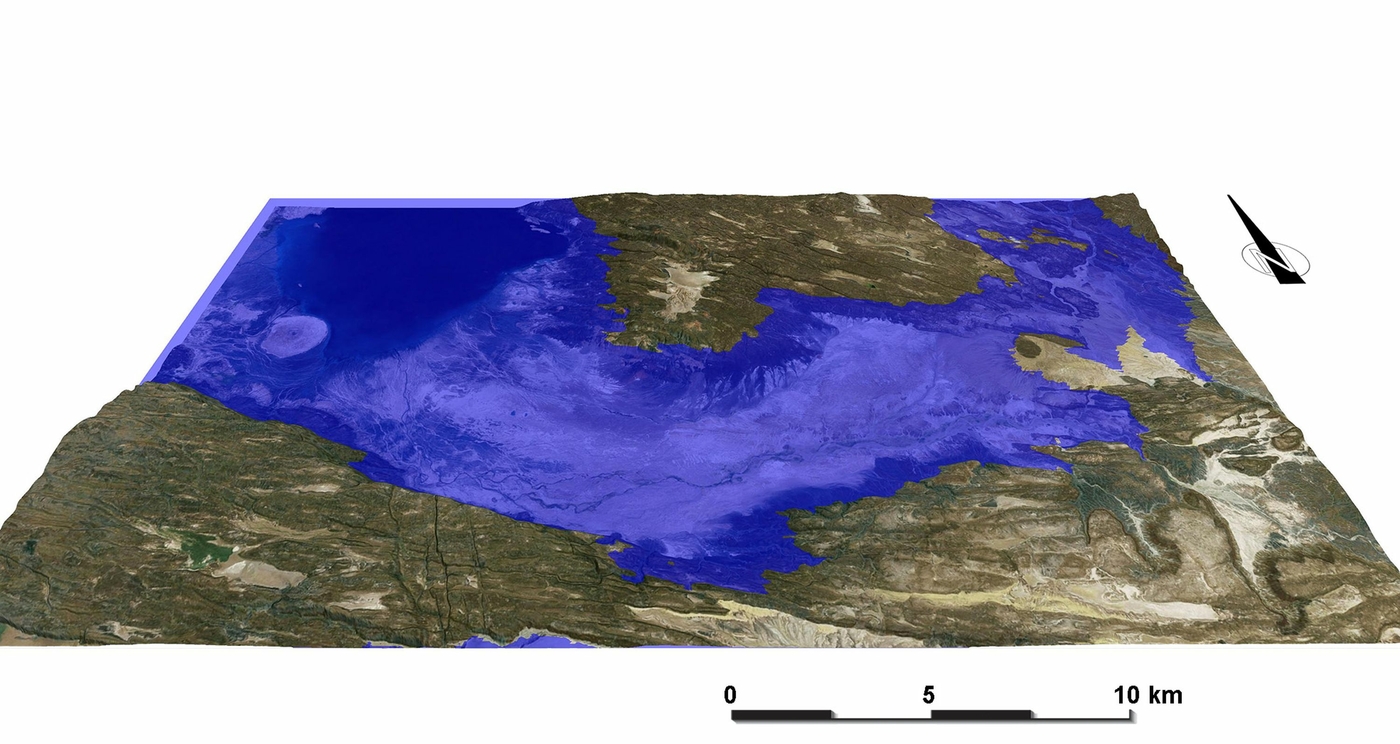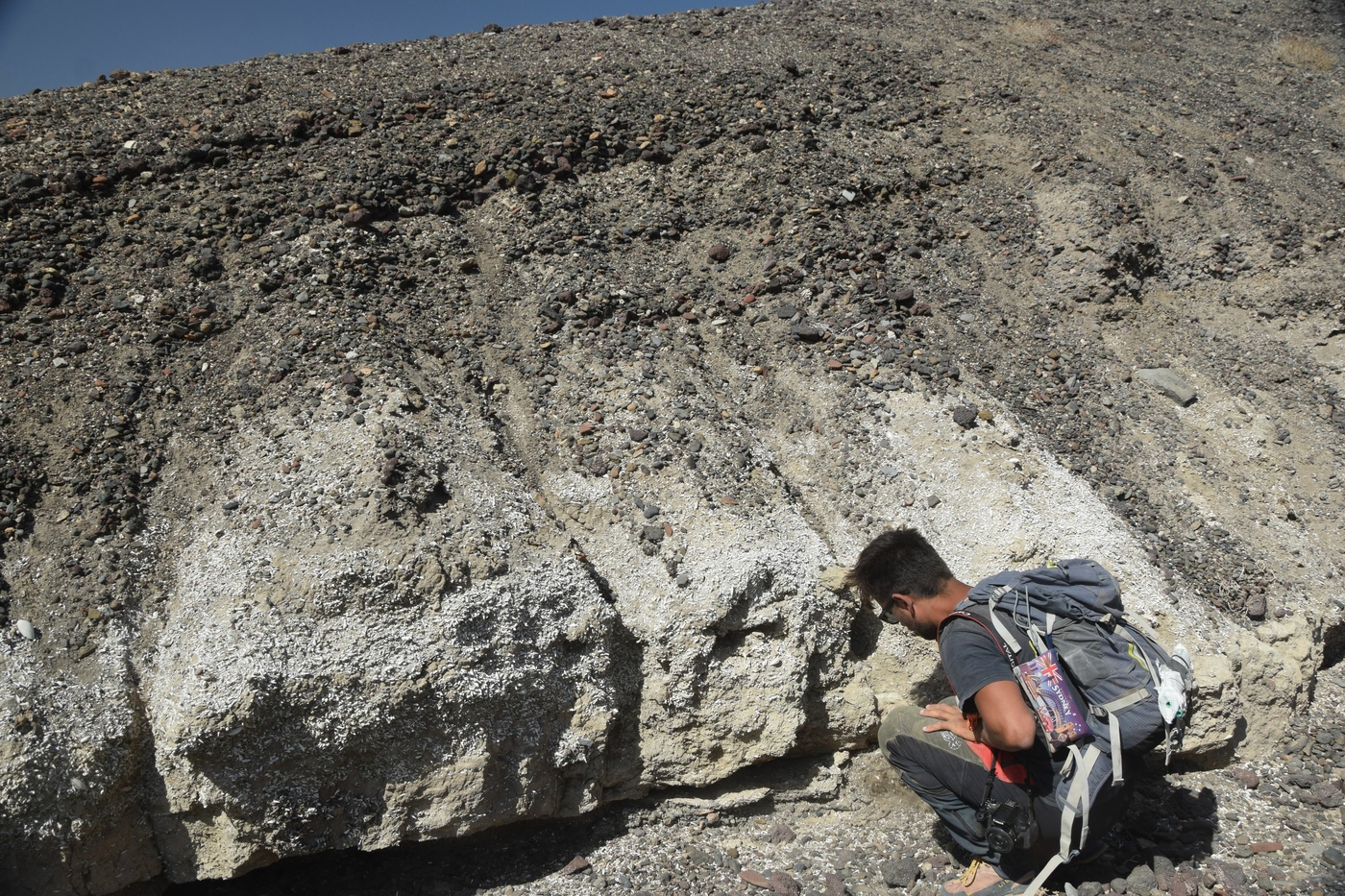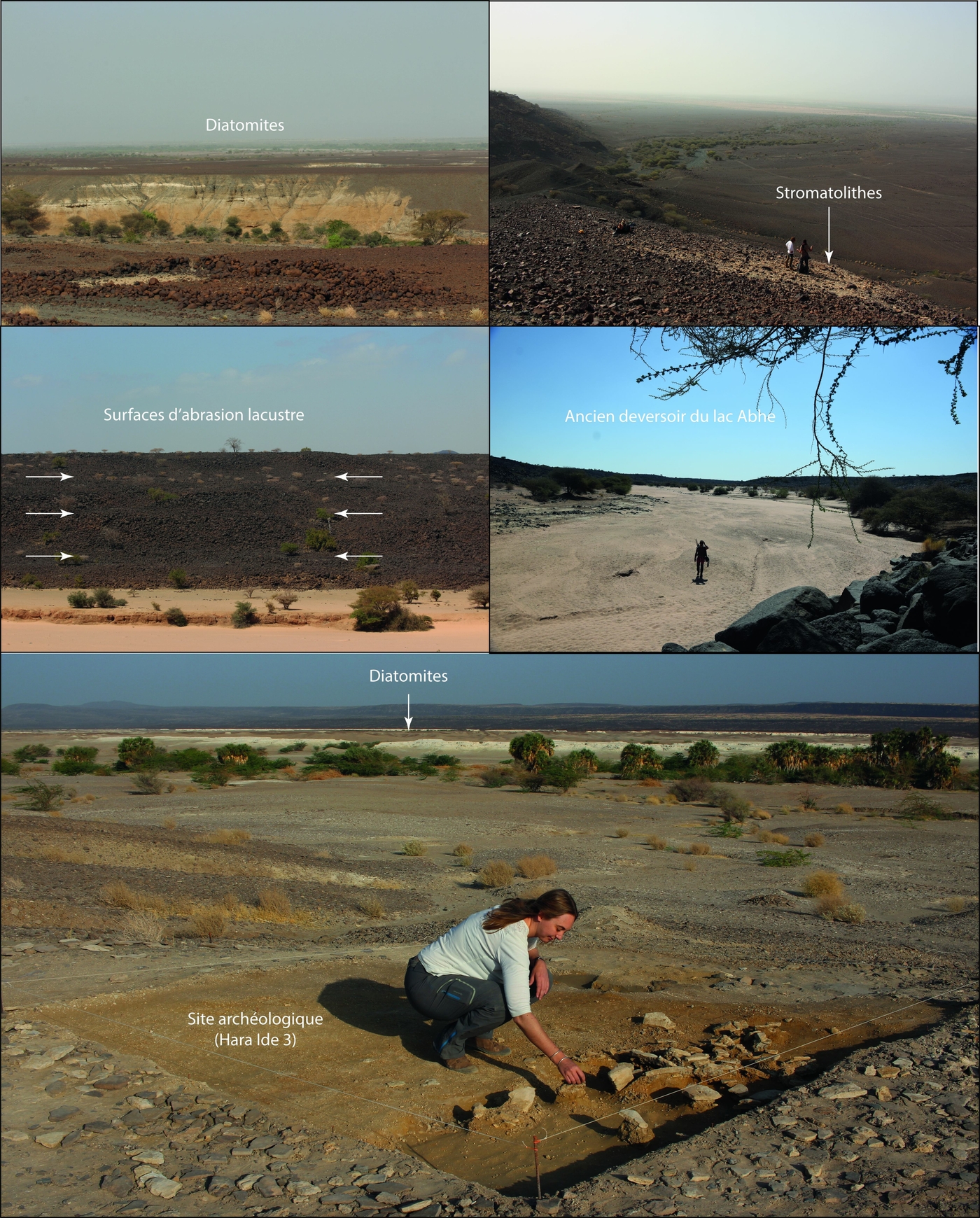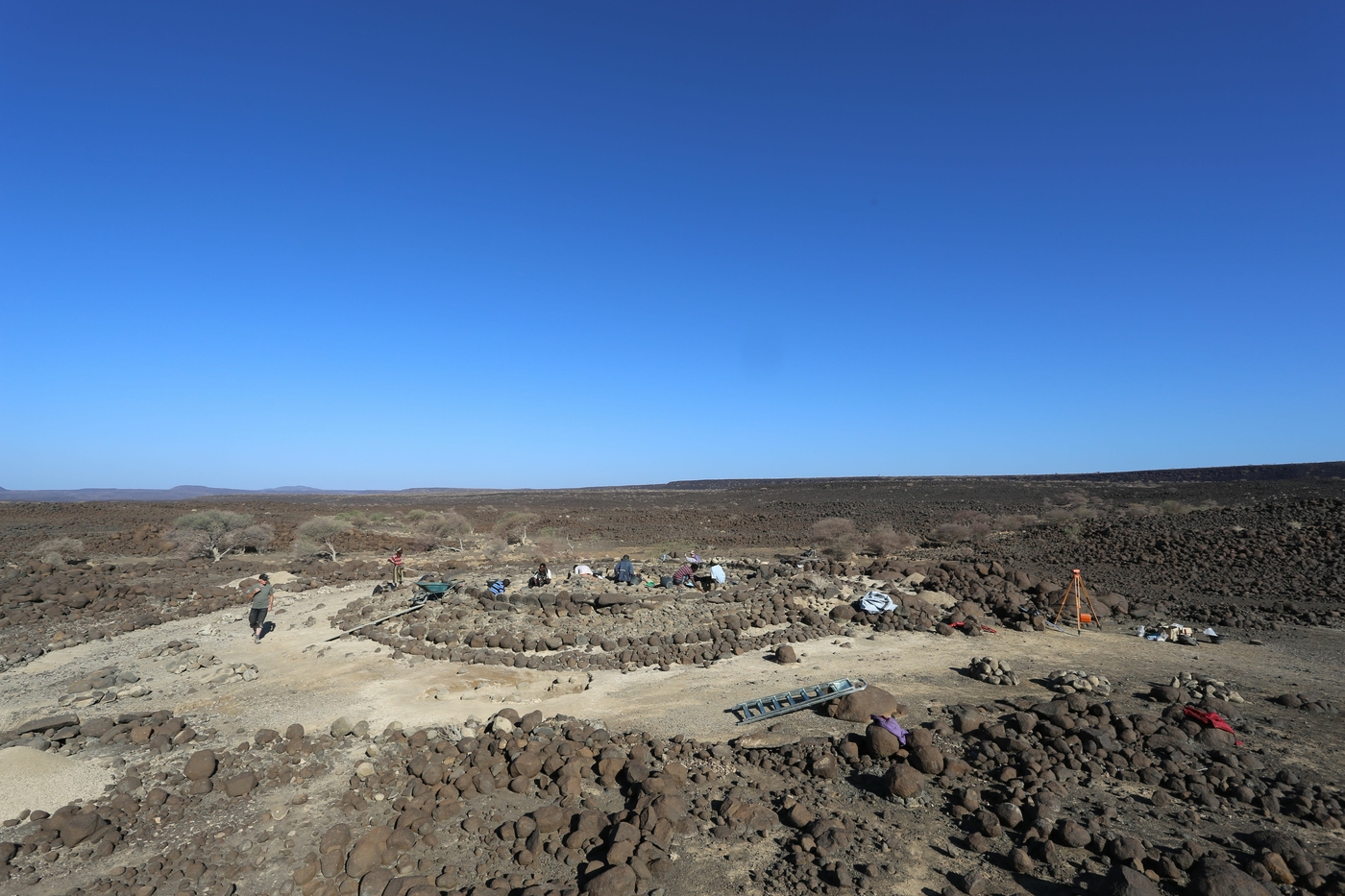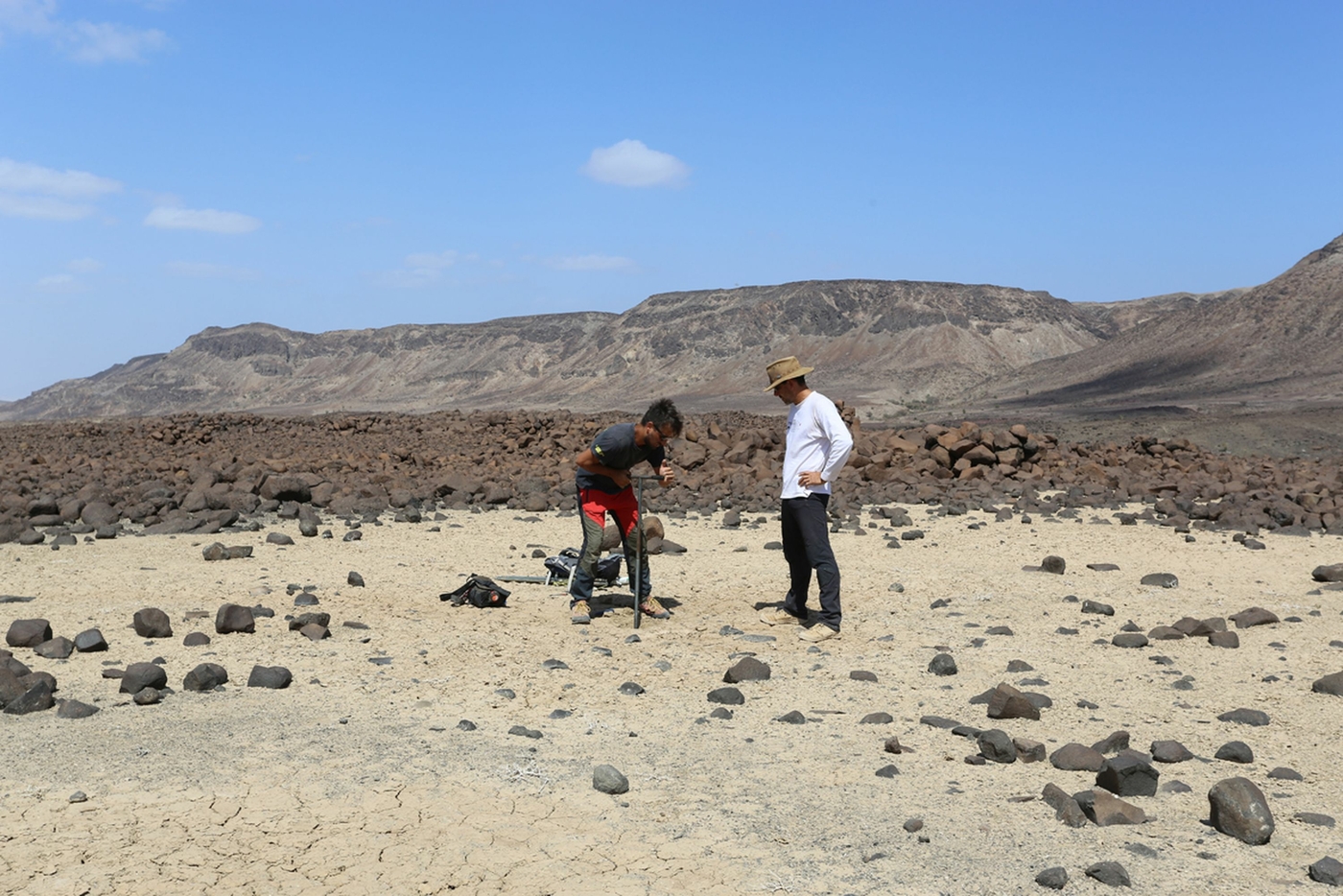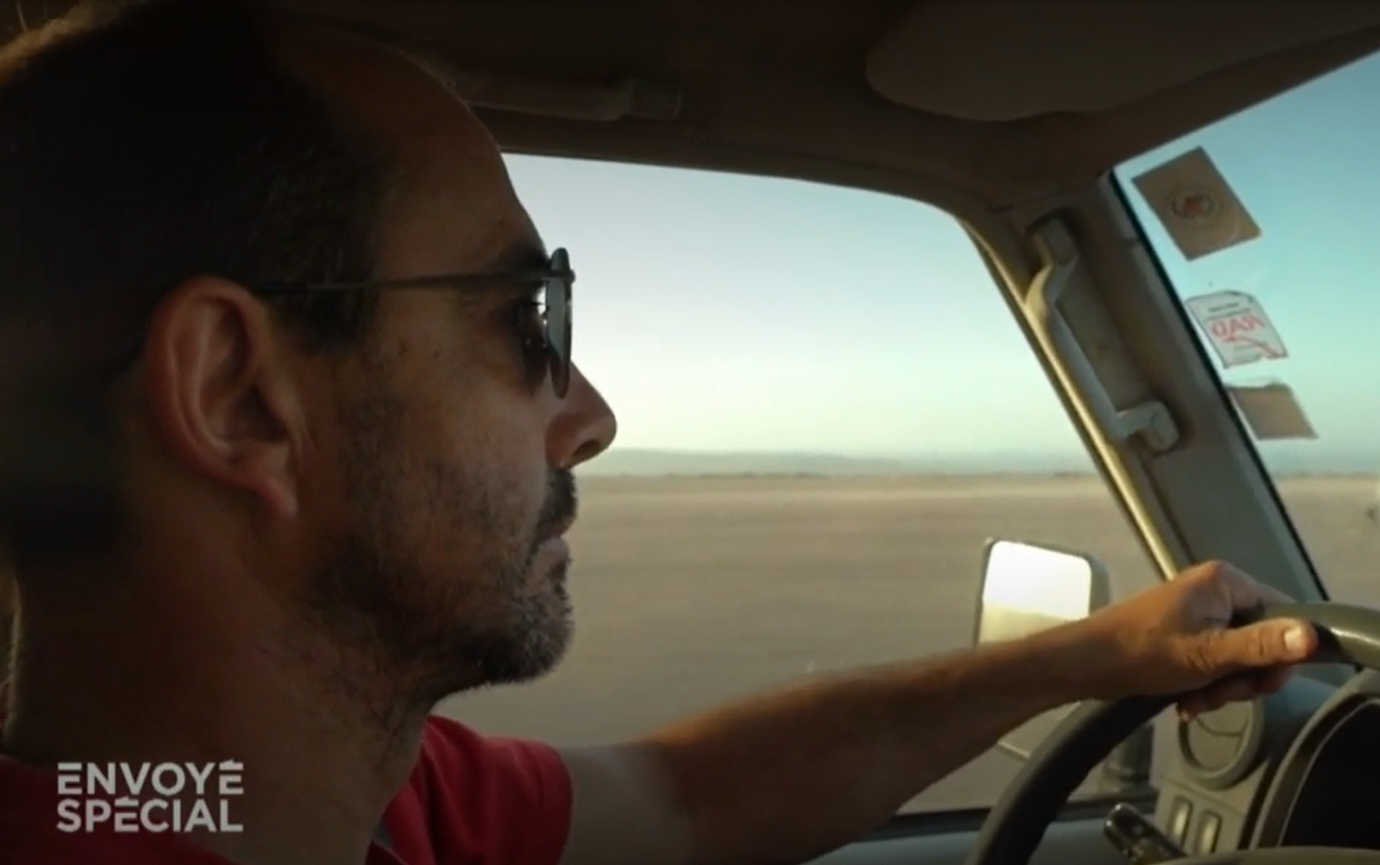The banks of Lake Abbe: fertile ground
In Djibouti, for thousands of years, Lake Abbe and the Gobaad basin, which extends it eastwards, provided prehistoric populations with many varied plant and animal resources, in an environment that was nothing like the arid climate we know today. Archaeologists have uncovered a fairly large number of sites used by hunters-gathers and fishers from 20,000 years ago to the 3rd millennium BCE. It was at this point, at the start of a change in the climate that would lead to a more arid environment, that these people modified their subsistence practices and adopted domestic animals for the first time in the Horn of Africa.
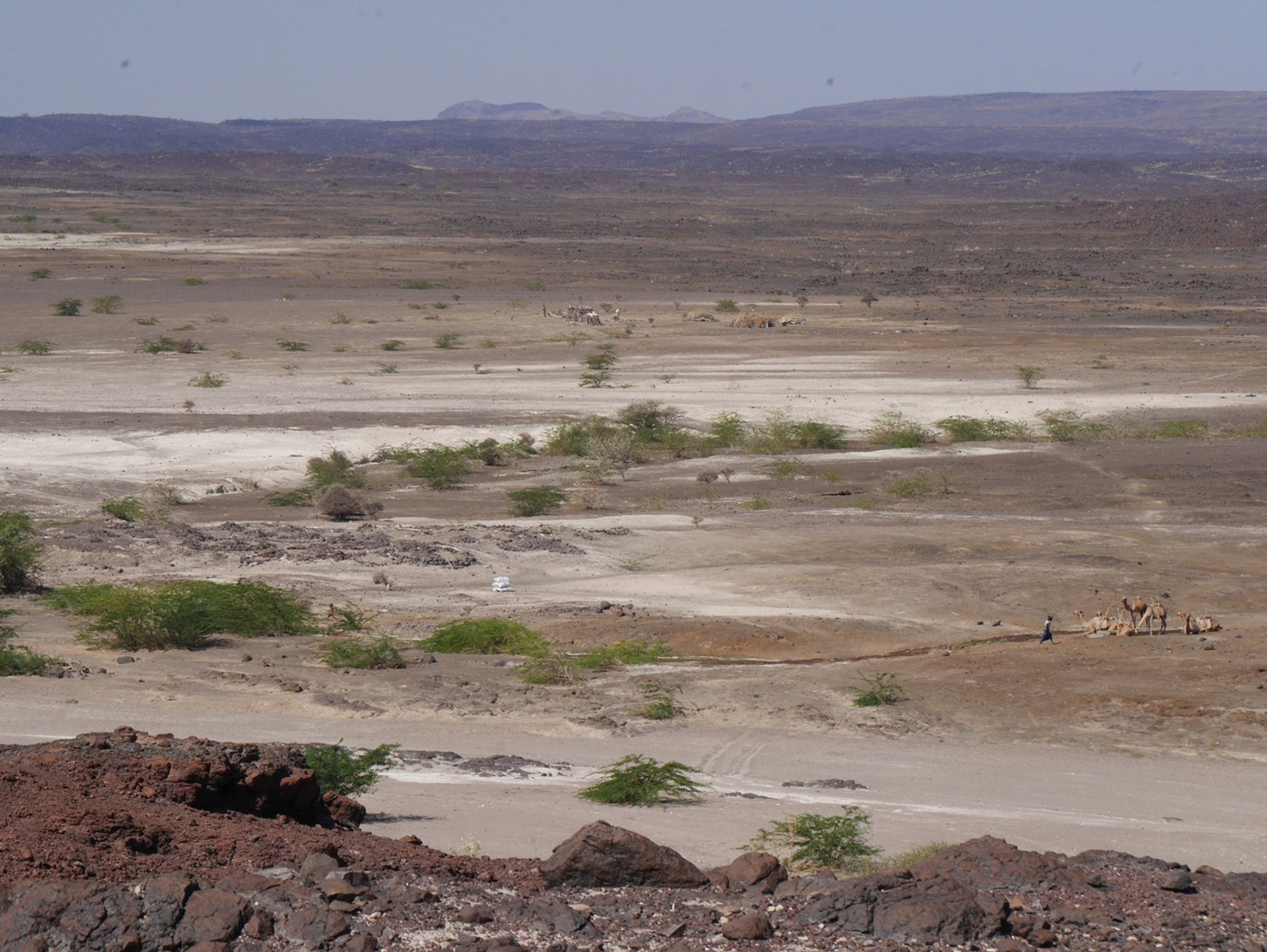
A site suited to human settlement
In the Republic of Djibouti, the arid region of Afar, between the Great Rift Valley of Ethiopia and the Red Sea, lies the basin of Lake Abbe, called the Gobaad basin. During prehistory, the banks of Lake Abbe were particularly well-suited to human settlement and the people who lived there benefited from an extremely rich plant and animal biodiversity.
Lake Abbe
Lake Abbe is one of the main receptacles of water from the Great Rift Valley and high plateaus of Ethiopia, supplied by the River Awash. When it rains in the high plateaus, the water levels in the lake rise. The study of these successive deposits both underwater and on the riverbanks makes it possible to reconstruct the main climatic fluctuations in the region. During the last 20,000 years in particular, the basin has experienced a series of major lacustrine transgressions that considerably increased its surface area. The area covered by the lake today is no more than 350 km2, compared with 6,000 km2 more than 10,000 years ago. The region’s highly active seismic events have also played a role in the rise and fall of water levels in the lake. The way the Gobaad basin looks today, with its barren landscape, including areas of desert, is very different to how it would have appeared to people in Prehistory.
A long period of occupation
Since this site was formerly suited to human settlement, the basin was intensively occupied during Prehistory and today more than 100 archaeological sites have been identified in the region. This region is particularly interesting because its sites span a period from 16,000 years ago (Hara Idé 3 site) to the 1st millennium CE (rock art sites of Dakka). The current excavations are helping shed light on the way of life of the last hunter-gatherers (Ali Dabba sites), but also of the first livestock breeders who, in the mid-3rd millennium BCE, began to rear cattle and goats, form village communities (Asa Koma site) and bury their dead in the first common burial grounds that gradually took on a monumental aspect (Antakari 3 site).
Studying climate change
This exceptional lacustrine environment, which records changes in the climate, has also provided material for specialised studies designed to reconstruct the landscapes and understand the evolution of plant and animal communities in this environment now strongly impacted by global warming. The scope of the Premières Sociétés de Production dans la Corne de l’Afrique research programme of the Ministry for Europe and Foreign Affairs extends beyond the Gobaad basin to the southern shores of the Gulf of Aden, in Somaliland, where archaeological surveys have revealed the “African Lascaux": the site of Laas Geel.
About the mission
The Premières Sociétés de Production dans la Corne de l’Afrique mission (French Ministry for Europe and Foreign Affairs and IRAH in Djibouti) has been directed since 2013 by J. Cauliez (CNRS, UMR 5608 Toulouse). It was created in 1984 by R. Joussaume and led from 2001 to 2013 by X. Gutherz.
Project supported by the French Ministry for Europe and Foreign Affairs on the advice of the Excavation Committee (Commission des fouilles).
The mission’s other sites:
Useful links
- Presentation of the mission on the website of the Laboratoire Traces UMR 5608 – Toulouse
- The mission has been awarded the SEEG label: Global ecology study sites or SEEG (CNRS – INEE programme)
- Mission implemented under an agreement with the Centre Français des Études Ethiopiennes IFRE 23 – USR 3127, Addis Ababa, Ethiopia
- Mission implemented in partnership with the Institut des Déserts et des Steppes
- Sponsorship


